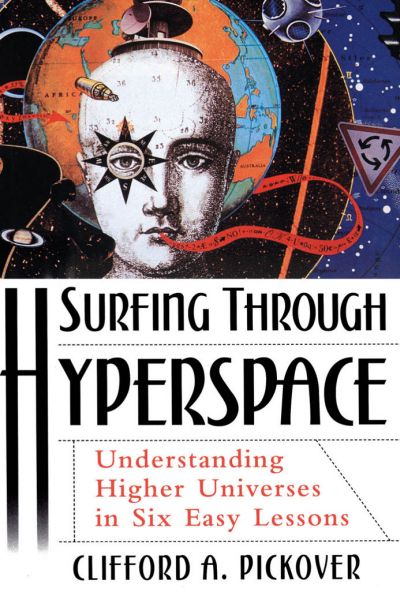
Surfing Through Hyperspace: Understanding Higher Universes in Six Easy Lessons by Clifford A. Pickover hovers around the concept of fourth dimension. In simple words, it’s a walkthrough of higher dimensions.
Clifford A. Pickover is an American author, editor, and columnist in the fields of science, mathematics, science fiction, innovation, and creativity. A futurist and science writer, Pickover likes to contemplate realms beyond our 3-dimensional reality. Interestingly, he puts his ideas down on paper for readers like us to experience his visualizations.
He is an inventor with over 800 patents. He has written over 50 books, and hundreds of technical papers in diverse fields, from genetic sequences to mathematically based studies.
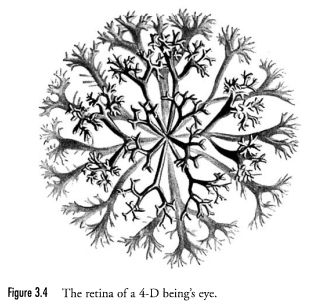
The four-dimensional world
The four-dimensional world treated in Surfing Through Hyperspace is distinct from the space-time of the theory of relativity, which combines three dimensions of space and one dimension of time to create a four-dimensional continuum. Rather, the four-dimensional world here appears to be a purely spatial concept, with no time component.
As Pickover mentioned in his preface, aim of this book is to make readers aware of the physical appearance of four-dimensional beings. And the ways they can enter and exit our 3-dimensional reality.
Sci-fi story of four-dimensional world
To make things simple, the author has presented a science fiction story, where the FBI agent is “you”, that is the reader and your fellow agent Sally.
Throughout the book, there is a conversation going on between the two characters, no narrations as such. And these characters are surfing into a four-dimensional world.
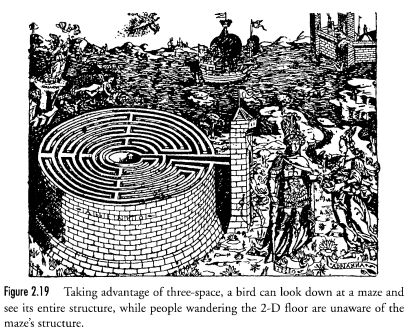
Abbott’s Flatland is the reference point
The concept of interacting with beings from a lower or higher dimension can be used as a way to explore the limitations and possibilities of our own understanding of reality. And this is what Pickover did. He made the classic book “Flatland” by Edwin Abbott, as his reference point. A two-dimensional being living in a world of flat surfaces, is visited by us, that is a three-dimensional being.
The two-dimensional character is unable to fully comprehend the three-dimensional being’s existence and perceives their interactions as mysterious or miraculous.
Similarly, if we were to imagine beings living in a four-dimensional world, they would likely have capabilities and perspectives that would seem miraculous or mysterious to us in our three-dimensional world. For instance, they might be able to move through physical objects or perceive time in a way that we cannot.
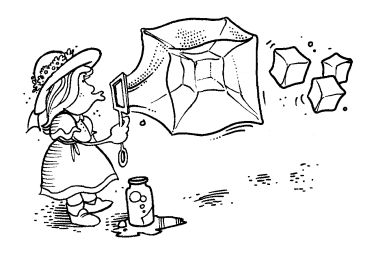
Hyperspace
Concepts like hyperspace are still being explored in mathematics and physics. However, its existence has not been definitively proven or disproven by scientific experimentation.
For example, in physics, higher dimensions may be used as a way to explain the behaviour of particles or the structure of the universe, but this does not necessarily mean that these dimensions exist in a literal sense.
Human brain cannot comprehend higher dimensions
As far as humans are concerns, they are still not able to perceive the higher dimensions. Although, scientists haven’t figured out the full potential of human brain, and so the current state of knowledge is that our brain cannot comprehend dimensions beyond the three dimensions of our physical space.
Although, some believe that with advanced technology or training, it may be possible to develop new ways of perceiving or interacting with higher dimensions.
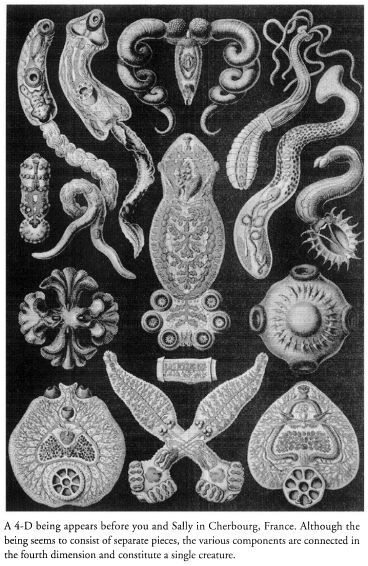
Concepts of higher dimensions
Pickover has made various illustrations and computer graphics easier for readers to concretize the otherwise unfathomable 4D ideas. Certain concepts that I enjoyed reading and visualising were:
Hyperspheres – it is a geometric object that exists in higher-dimensional space. Like sphere has points that are equidistant from a central point, a hypersphere in higher dimensions is defined in the same way, but with additional coordinates added.
Tesseracts – It is also known as a hypercube or a 4-cube. A cube is a three-dimensional object made up of six square faces, a tesseract is a four-dimensional object made up of eight cube faces.
Enantiomorphic – object or structure which are non-superimposable mirror images.
Extrinsic geometry – geometric objects or structures in a space that is different from the one they naturally exist in.
Quaternions – they are four-dimensional extension of complex numbers. Or an extension of the complex plane, discovered by William Hamilton in 1843 while attempting to define 3-D multiplications.
Nonorientable surface – it is a surface that lacks orientation. There is no “clockwise” or “counterclockwise” direction, for instance, mobius band and the Klein bottle.
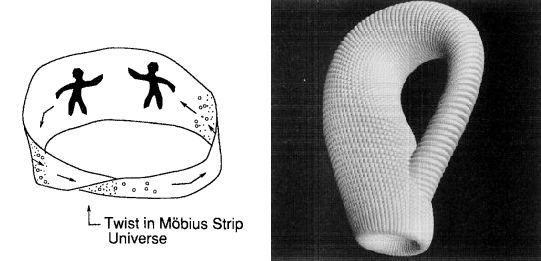
- A Möbius strip is a surface that is formed by taking a rectangular strip of paper, giving it a half-twist, and then gluing the two ends together. The resulting surface has only one side and one edge, and it is nonorientable because it is impossible to consistently define a direction of rotation around the edge.
- Klein Bottle is formed by taking a rectangle and gluing its edges together with a half-twist, and the projective plane, which is formed by taking a disk and identifying opposite points on the boundary.
Kaluza-Klein theory – this theory suggests, light as vibrations in a higher spatial dimension. Among the most recent formulations of these concepts is superstring theory that predicts a universe of ten dimensions—three dimensions of space, one dimension of time, and six more spatial dimensions.
Supergravity – It is a proposed theory of gravity that is based on the concept of supersymmetry, which postulates that every known particle in the universe has a “superpartner” particle with similar properties but differing in spin by 1/2. In supergravity, these superpartners also possess gravitational interactions.
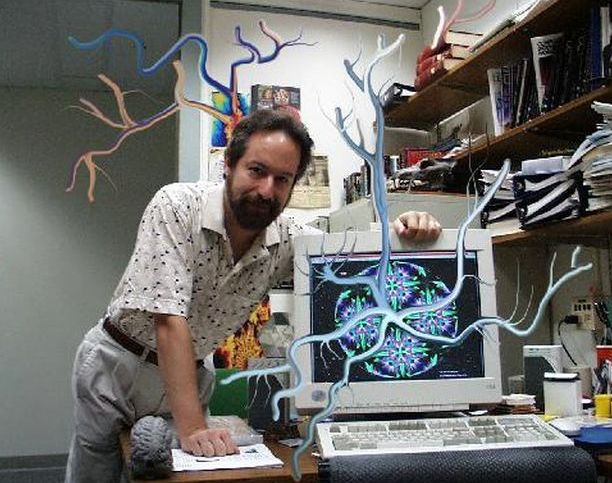
Takeaway
Overall, Surfing Through Hyperspace is an interesting read. This book is not just limited to the mathematicians and physicists. Even general reader like myself can get something out of it. So, if you want to stretch your brain into the 4-dimensional world (not so probable it may sound), the book can walk through you into that higher dimension.



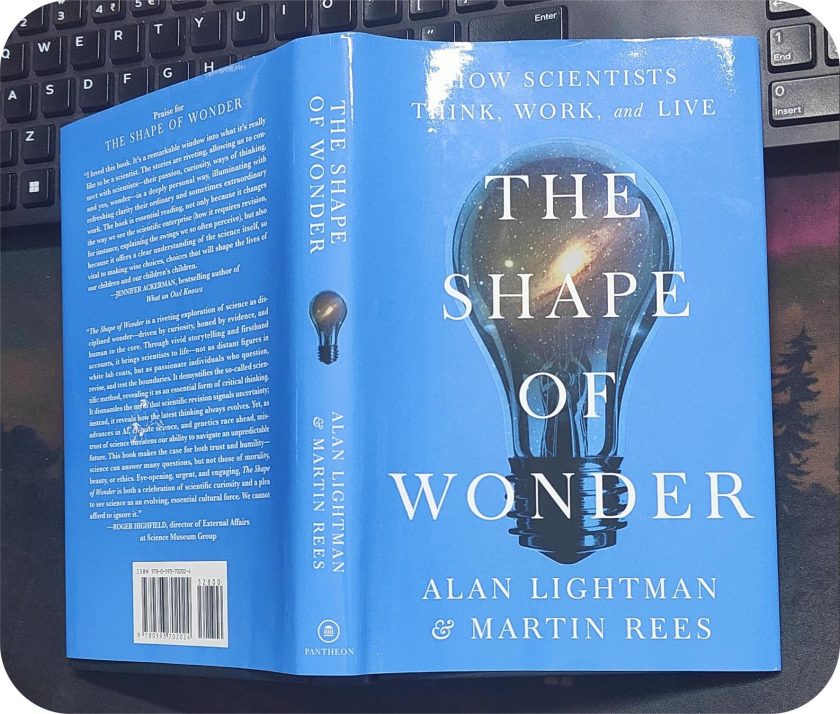
[…] finishing “Surfing Through Hyperspace” by Clifford A. Pickover last year, I was fascinated by patterns, shapes, and dimensions. […]